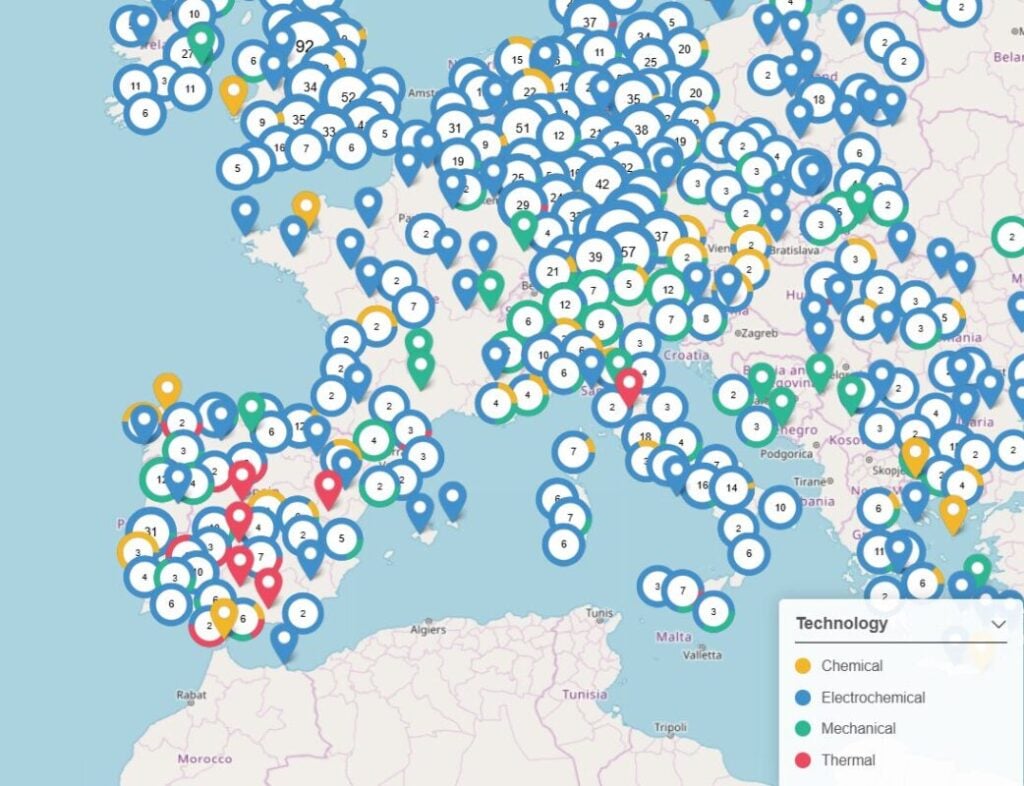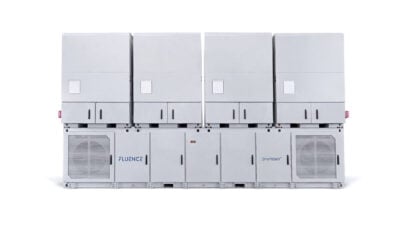
There is a “healthy pipeline of projects in development” across Europe’s energy storage sector, but the technologies are as yet “significantly underutilised” below their potential.
That’s according to a new report produced for the European Union (EU) Joint Research Centre (JRC) and published a few days ago.
The report, ‘Overview of Energy Storage Deployment in Europe,’ details the accelerating growth of adoption across a variety of technologies, including mechanical pumped hydro and electrochemical batteries, in both EU Member States and neighbouring countries.
The author, Maria Isabel González Cuenca of the JRC, identified 170.92GW of capacity across 2,356 total projects across Europe, 70GW operational and a further 97.26GW expected to be online by 2030. The remainder of the total was accounted for by inactive projects. Energy storage is at a pivotal stage of its deployment, according to González Cuenca.
Try Premium for just $1
- Full premium access for the first month at only $1
- Converts to an annual rate after 30 days unless cancelled
- Cancel anytime during the trial period
Premium Benefits
- Expert industry analysis and interviews
- Digital access to PV Tech Power journal
- Exclusive event discounts
Or get the full Premium subscription right away
Or continue reading this article for free
The data comes from the European Energy Storage Inventory, a new real-time dashboard of energy storage deployments and their current status, from operational and announced to permitted, under construction or inactive. The inventory is created using data from Wood Mackenzie and publicly available data and was launched in March.
The report also highlights policies and regulations that are impacting adoption, finding that six EU countries have adopted energy storage targets in their national energy and climate plans (NECPs) and 17 countries have introduced energy storage-specific policies, but not targets.
Along with the actions of individual states, two overarching policy measures are expected to have a major impact at the EU level in the coming years.
Firstly, transmission and distribution (T&D) system operators will be required under a new methodology to assess flexibility needs on their networks, to assist long-term planning, with energy storage as a key tool of that flexibility.
This topic was widely discussed by industry participants and experts over the first couple of years, following the emergence of a leaked draft of the European Commission’s (EC) Electricity Market Design (EMD) (ESN Premium article) in 2023. In a May 2024 guest blog on the topic, Eaton Corporation’s UK & Ireland managing director Siobahn Meikele offered the following definition of flexibility in this context:
Flexibility in electric market terms refers to services that help system operators to manage energy flows in order to maintain the stability of the grid, as well as those technologies that can ramp up and down production or activity in response to market signals.
Example technologies include battery energy storage systems (BESS), EV charging and demand side response programmes.
Secondly, the implementation and enforcement of certain obligations under the EU Battery Regulation that was adopted last year and is gradually coming into force. This was covered in a couple of articles on the site last week, with a guest blog from TÜV SÜD expert Nicholas Bellini focusing mostly on the first year of mandatory CE marking for battery products since August 2025 and an ESN Premium video interview with Sarah Montgomery of Infyos and Suriya Edwards of law firm Freeths, with a more holistic overview of supply chain traceability and transparency.
‘Gaps remain in implementation, market access and investment incentives’
It should be noted that the new EU JRC report’s deployment and forecast data diverge from recent findings from consultancy LCP Delta, published in the European Market Monitor on Energy Storage (EMMES) report from the trade association Energy Storage Europe (ESE, formerly EASE).
EMMES 9.5, an interim report before the next annual edition due in Q2 2026, found that as of the beginning of November, 99.3GW of energy storage had been deployed to date across various technologies in Europe. The report’s authors predicted that cumulative deployments would surpass the 100GW mark by the end of this month.
Where LCP Delta-ESE and the EU report are in firm agreement is that more must be done to help integrate a forecast surge in renewable energy development led by solar PV, and to add resilience and flexibility to European grids.
Maria Isabel González Cuenca of the JRC wrote that despite the recent and rapid growth—much of it concentrated in a handful of EU and non-EU countries—being forecasted to accelerate, energy storage remains “significantly underutilised” across Europe.
In addition to providing flexibility, González Cuenca wrote, energy storage can help mitigate energy price volatility, reduce peak time electricity costs and enable consumers to use electricity at the optimal times in response to dynamic pricing.
The EU is recommending specific actions Member States can take to facilitate that adoption, while the declining costs of lithium iron phosphate (LFP) batteries, in particular, will drive the rollout of large-scale energy storage facilities further.
The report quotes a 37% decline in LFP capex costs between 2022 and 2025, as found by S&P. In Germany, the EU’s biggest energy storage market and second in Europe to the UK, LFP capex fell from around €300/kWh (US$345.88/kWh) in 2022 to €200/kWh this year.
‘Overview of Energy Storage Deployment in Europe’ aims to be a comprehensive snapshot of the current and forecasted status and includes case studies of energy storage deployments across various technologies, business models and procurement mechanisms in Greece, Germany, the Iberian Peninsula and the UK.
Author González Cuenca wrote that energy storage is gaining recognition from a policy perspective, “but more progress is needed.”
The Trans-European Networks for Energy (TEN-E) regulation categorises energy storage as eligible infrastructure, and steps taken by Member States to include targets or support policies are positive steps, but “gaps remain in implementation, market access and investment incentives,” according to the Overview.
“The European Commission has made efforts to provide guidance and standard methodologies, and there are some initiatives ongoing that can reinforce the energy storage systems deployment. Still, stronger coordination and national-level action are needed to create a supportive environment for scaling up energy storage,” it said.





